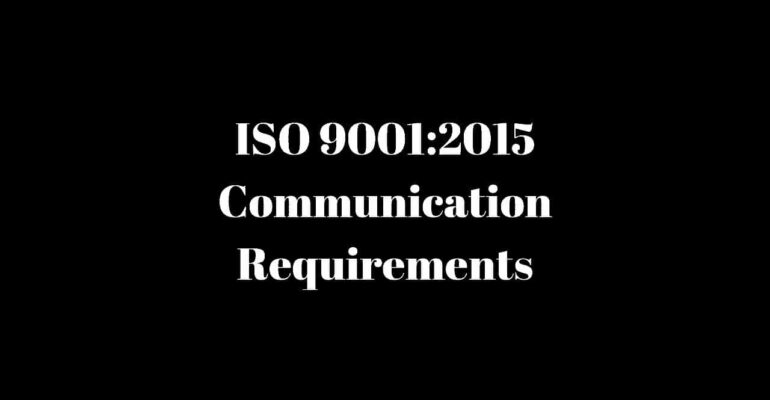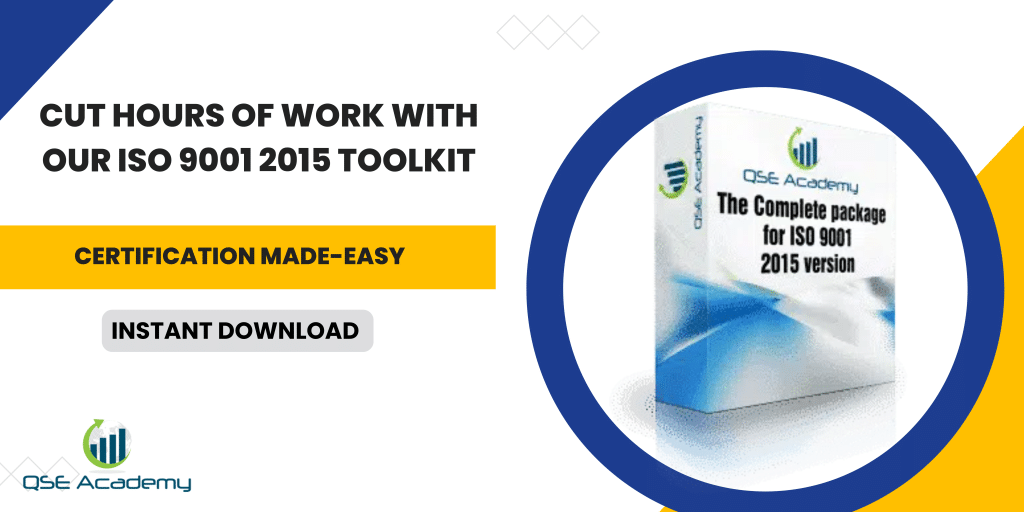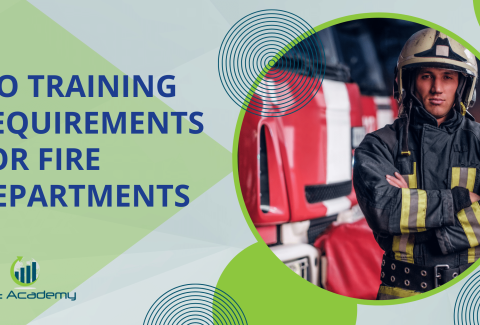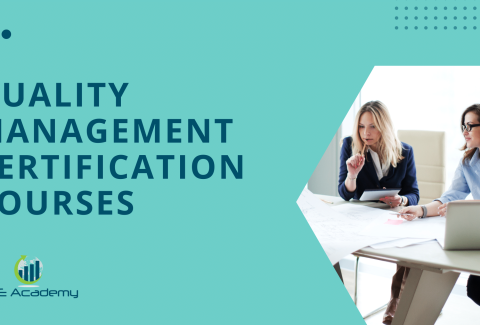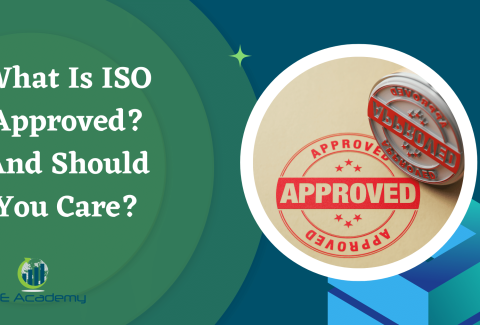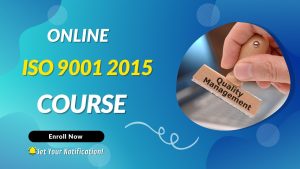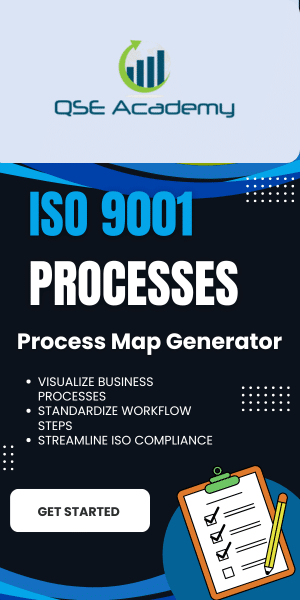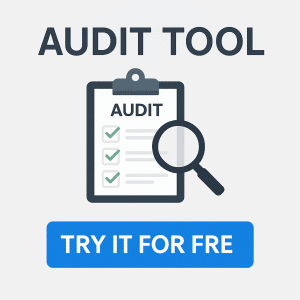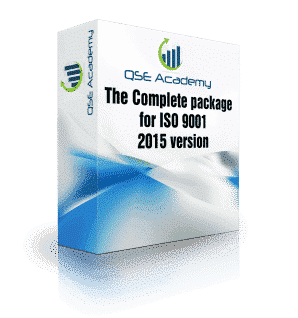ISO 9001:2015 Communication Requirements
Last Updated on October 13, 2025 by Hafsa J.
ISO 9001:2015 Communication Requirements
Let’s talk about communication—it’s one of those things we all know is important, but in the world of quality management, it’s absolutely critical. That’s why ISO 9001 Communication plays such a key role in the ISO 9001:2015 standard. Whether it’s sharing information with your team, keeping customers informed, or staying on the same page with suppliers, effective communication is what keeps everything running smoothly.
So, what exactly does ISO 9001 Communication mean? In simple terms, it’s all about ensuring that the right information is delivered to the right people, at the right time, and in the right way. Sounds straightforward, right? But when you think about all the moving parts in a business—different teams, external stakeholders, various processes—it’s easy to see how things can get complicated.
This is where ISO 9001:2015 steps in to help. The standard lays out specific communication requirements to make sure businesses don’t leave anything to chance. From determining what needs to be communicated to figuring out how and to whom, ISO 9001 Communication ensures that nothing falls through the cracks.
In this article, we’ll dive into everything you need to know about ISO 9001 Communication, why it’s so important, and how you can implement it effectively in your organization. By the end, you’ll have a clear understanding of how communication can help you not only comply with ISO 9001:2015 but also build a more efficient, trustworthy, and successful business. Let’s get started!
What Does ISO 9001 Say About Communication?
Alright, let’s dive into the nitty-gritty of ISO 9001 Communication and what the standard actually requires. Spoiler alert: it’s not as intimidating as it sounds. At its core, ISO 9001:2015 is all about creating systems that help organizations achieve consistent quality, and communication is a huge part of that.
One of the key sections to focus on is Clause 7.4, which specifically addresses communication. According to ISO 9001:2015, organizations need to ensure that communication is planned, effective, and aligned with their quality management system (QMS). Basically, the standard is asking, “How are you making sure everyone gets the right information, at the right time, in the right way?”
Here are some of the main points covered under ISO 9001 Communication:
1. Determining What Needs to Be Communicated
This might seem obvious, but it’s a crucial first step. What information is essential for your operations, teams, customers, or suppliers? For example, are you communicating changes in processes, quality objectives, or customer requirements effectively? ISO 9001 encourages businesses to be intentional about what information is shared—and what’s left out.
2. Defining Who Needs the Information
Not everyone needs to know everything, and that’s okay. ISO 9001 emphasizes tailoring communication to specific audiences. For instance, employees on the production line might need clear instructions on product specs, while customers might need updates on delivery schedules. Identifying your audience is key to effective ISO 9001 Communication.
3. Choosing the Right Methods
Whether it’s emails, meetings, training sessions, dashboards, or reports, the method you use to communicate matters. ISO 9001 doesn’t tell you exactly how to communicate—it gives you the flexibility to choose what works best for your organization. Just make sure your chosen methods are consistent and effective for the message you’re delivering.
4. Monitoring and Evaluating Communication
Here’s the part that often gets overlooked: how do you know if your communication is working? ISO 9001 encourages organizations to monitor and evaluate the effectiveness of their communication efforts. This could mean gathering feedback, tracking how well instructions are followed, or even reviewing customer satisfaction surveys. If something isn’t working, it’s an opportunity to improve.
Internal vs. External Communication
One thing to keep in mind is that ISO 9001 Communication covers both internal and external communication. Internally, it’s about keeping your team aligned and ensuring everyone understands their role in maintaining quality. Externally, it’s about building trust with customers, suppliers, and other stakeholders by being clear and transparent.
Why Does This Matter?
Think about this: miscommunication can lead to delayed projects, frustrated customers, or even costly mistakes. By following the ISO 9001 Communication requirements, you’re not just checking a compliance box—you’re building a system that keeps everyone informed, aligned, and working toward the same goals.
So, if you’ve ever felt like your organization’s communication could use a little boost, ISO 9001 has your back. Up next, we’ll dive into why communication is such a critical piece of the quality puzzle. Stay tuned!
Why ISO 9001 Communication Is Crucial for Success
Let’s be honest—communication isn’t just a “nice-to-have” in business; it’s an absolute must. And when it comes to meeting the requirements of ISO 9001:2015, it’s even more critical. That’s why ISO 9001 Communication isn’t just a section of the standard—it’s a fundamental piece of the quality management puzzle.
But why does communication play such a big role in ISO 9001? Let’s break it down into three key reasons that show why effective communication can make or break your success.
1. Aligning Your Team Around Quality Goals
Imagine trying to run a relay race, but no one on your team knows when to pass the baton or where the finish line is. Chaos, right? That’s exactly what can happen in a business without proper communication.
ISO 9001 Communication ensures that everyone in your organization understands their role in maintaining quality. From senior leadership to front-line employees, clear communication helps align the entire team around shared goals. When everyone’s on the same page, it’s easier to deliver consistent results, meet quality objectives, and keep your customers happy.
2. Building Trust With Stakeholders
Your customers, suppliers, and regulators all rely on you to deliver on your promises. Whether it’s sharing updates on a project, clarifying requirements, or providing product information, communication is key to building trust.
With ISO 9001 Communication, businesses are encouraged to be transparent and proactive. For example, regularly updating customers on delivery timelines or notifying suppliers about changes in product specifications can prevent misunderstandings and strengthen partnerships. Communication isn’t just about compliance—it’s about creating strong, reliable relationships.
3. Preventing Costly Mistakes
Have you ever seen a project go off the rails because someone didn’t get the memo? Miscommunication can lead to missed deadlines, production errors, or even safety risks. That’s why ISO 9001 Communication places so much emphasis on planning and clarity.
By defining what needs to be communicated, who needs the information, and how it should be shared, businesses can avoid confusion and reduce errors. For instance, if process changes are clearly communicated to employees, they’re more likely to follow the updated procedures correctly, saving time and resources.
A Real-Life Example
Let’s say you’re a manufacturing company implementing ISO 9001:2015. During a routine audit, you discover that several employees weren’t aware of updated quality control procedures. As a result, some products failed to meet customer expectations.
With proper ISO 9001 Communication, this could have been avoided. By clearly communicating the changes through training sessions, updated manuals, and regular team meetings, everyone would have been on the same page, ensuring a smoother and more efficient process.
The Bigger Picture
Effective ISO 9001 Communication isn’t just about checking a box for compliance—it’s about driving real, tangible results for your business. It helps you build a culture of quality, improve customer satisfaction, and reduce risks. When done right, communication becomes one of your most valuable tools for success.
Next, we’ll explore the nuts and bolts of what makes communication effective under ISO 9001:2015. From choosing the right methods to identifying your audience, let’s dive deeper into how to make it work in your organization!
Key Elements of Effective ISO 9001 Communication
Now that we know why ISO 9001 Communication is so important, let’s get into the “how.” What does it actually take to make communication effective under ISO 9001:2015? Don’t worry—it’s not about overloading people with endless emails or meetings. Instead, it’s about being intentional and strategic. Let’s break it down into the key elements that make ISO 9001 Communication work.
1. Determining What Needs to Be Communicated
The first step in any successful communication plan is figuring out what information actually needs to be shared. ISO 9001 Communication isn’t about telling everyone everything—it’s about sharing the right information at the right time.
For example, your production team might need detailed instructions on process changes, while your customers may only need updates on delivery timelines. The standard encourages businesses to define what’s critical to communicate and leave out the noise. This way, everyone stays focused and informed without being overwhelmed.
2. Identifying Your Audience
Not all communication is one-size-fits-all. A big part of ISO 9001 Communication is tailoring your message to the audience.
Think about it: the way you communicate with employees will look very different from how you communicate with customers or suppliers. Employees might need hands-on training or detailed process guides, while external stakeholders might prefer quick updates via email or reports. Identifying who needs the information is key to ensuring it’s received and understood.
3. Selecting the Right Communication Methods
Now that you know what to share and who to share it with, the next step is choosing the best way to communicate. ISO 9001 Communication gives you the flexibility to use methods that work best for your organization, whether that’s face-to-face meetings, emails, newsletters, dashboards, or even project management tools.
For instance, if you’re rolling out a new quality policy, you might hold a company-wide meeting to ensure everyone understands it. On the other hand, for regular progress updates, an internal newsletter or dashboard might do the trick. The goal is to use methods that make the information clear, accessible, and actionable.
4. Documenting Communication Processes
Here’s where things get practical. ISO 9001:2015 encourages businesses to document their communication processes as part of their quality management system. This doesn’t mean creating a mountain of paperwork—it’s about having a simple plan that outlines:
- What information needs to be communicated.
- Who is responsible for sharing it.
- How it will be delivered.
- When it will happen.
A clear communication plan ensures consistency and helps everyone know what to expect.
5. Monitoring and Measuring Communication Effectiveness
Finally, communication isn’t a “set it and forget it” process. To comply with ISO 9001 Communication requirements, you need to monitor and measure how effective your communication efforts are.
This could involve collecting feedback from employees, tracking whether instructions are being followed correctly, or even reviewing customer satisfaction surveys. If something isn’t working—like messages not reaching the right people or confusion about processes—it’s a chance to improve and adjust your approach.
Putting It All Together
When you combine these elements, you get a communication system that’s not just compliant with ISO 9001:2015 but also practical and effective. By being intentional about what you share, tailoring your message to the audience, and choosing the right methods, you’re setting your organization up for success.
Up next, we’ll look at how to put these ideas into action with real-world strategies for implementing ISO 9001 Communication in your organization. Let’s make it happen!
How to Implement ISO 9001 Communication in Your Organization
Now that we’ve covered the key elements of ISO 9001 Communication, let’s talk about how to put them into action. The good news? You don’t need a massive overhaul to get started—just a thoughtful, step-by-step approach that fits your organization’s unique needs. Here’s how you can build an effective communication framework that aligns with ISO 9001:2015 requirements.
1. Conduct a Communication Needs Assessment
The first step in implementing ISO 9001 Communication is figuring out where you currently stand. Take a moment to evaluate your existing communication processes. Ask yourself:
- What’s working well?
- Where are the gaps?
- Are important messages reaching the right people?
For example, if employees on the production floor aren’t receiving updates about process changes, that’s a gap you’ll need to address. A communication needs assessment will help you identify areas for improvement and prioritize your efforts.
2. Document Your Communication Plan
ISO 9001:2015 emphasizes the importance of planning, and that includes communication. Creating a documented communication plan doesn’t have to be complicated—it just needs to answer a few key questions:
- What information needs to be communicated? (e.g., policy updates, quality objectives, process changes)
- Who is responsible for sharing it? (e.g., department heads, managers, or team leads)
- How will it be communicated? (e.g., meetings, emails, dashboards, or training sessions)
- When will it happen? (e.g., daily check-ins, monthly reports, or as-needed updates)
This plan acts as a roadmap, ensuring your organization stays consistent and intentional with its communication efforts.
3. Train Your Team on Communication Protocols
Even the best communication plan won’t work if your team isn’t on board. That’s why training is a critical part of ISO 9001 Communication. Make sure employees understand the plan, their role in it, and why effective communication is so important.
For instance, you might hold workshops to train managers on how to cascade information to their teams or provide clear guidelines for how and when updates should be shared. The goal is to create a culture where communication flows smoothly at every level.
4. Leverage Technology to Streamline Communication
Technology can be your best friend when it comes to ISO 9001 Communication. Tools like intranets, project management software, and automated notification systems can make it easier to share information quickly and effectively.
For example, you could use an internal messaging platform for real-time updates or a document management system to ensure employees always have access to the latest procedures and policies. The right tools can save time, reduce misunderstandings, and keep everyone on the same page.
5. Monitor and Adjust Your Communication Efforts
Communication isn’t a one-and-done process—it’s something you’ll need to continually monitor and refine. Gather feedback from employees and stakeholders to find out what’s working and what isn’t.
Let’s say you discover that some team members aren’t receiving important updates because they’re not checking their emails regularly. You might decide to implement team huddles or use a messaging app instead. The point is to stay flexible and adjust your approach as needed to ensure your ISO 9001 Communication remains effective.
Real-Life Example: A Simple Communication Fix
Here’s a quick story to show how these steps can make a big difference: A small manufacturing company noticed that employees were often confused about changes to production schedules. After conducting a communication needs assessment, they realized updates were only being shared in emails, which many workers weren’t checking regularly.
The company implemented a new system: daily team huddles at the start of each shift to share key updates. They also posted schedules on a central dashboard in the production area. The result? Fewer mistakes, improved efficiency, and happier employees—all thanks to better ISO 9001 Communication.
Take the First Step
Implementing ISO 9001 Communication doesn’t have to be overwhelming. Start small, focus on your organization’s unique needs, and take it one step at a time. With a solid communication plan, the right tools, and a commitment to continuous improvement, you’ll be well on your way to meeting ISO 9001:2015 requirements—and making your business stronger in the process.
Next, we’ll dive into common challenges organizations face with ISO 9001 Communication and how to overcome them. Stay tuned!
Common Challenges in ISO 9001 Communication (and How to Overcome Them)
Let’s face it—no matter how well you plan, communication can be tricky. Even with ISO 9001 Communication guidelines in place, organizations often face challenges that can disrupt the flow of information and impact quality management. But the good news? Every challenge comes with an opportunity to improve. Let’s take a closer look at some of the most common hurdles and how to tackle them head-on.
1. Inconsistent Messaging
Have you ever played the game of telephone? The message at the end is often nothing like the one at the start! This is what happens when communication isn’t consistent. Different teams might receive conflicting information, or important updates might not get shared with everyone who needs to know.
How to Overcome It:
- Centralize your communication processes. For example, use a shared dashboard or a single point of contact to ensure the same message reaches everyone.
- Create templates or standardized formats for things like reports, memos, or announcements to maintain consistency across the board.
- Review communication plans regularly to keep them up-to-date with changes in processes or policies.
With clear, consistent ISO 9001 Communication, everyone stays on the same page, reducing the risk of misunderstandings.
2. Lack of Engagement
Even the best-planned communication can fall flat if people aren’t paying attention. Employees might tune out lengthy emails or skip meetings, leaving them unaware of critical updates.
How to Overcome It:
- Tailor your communication to the audience. Keep messages short, relevant, and focused on what matters to the people receiving them.
- Use a mix of communication methods to keep things engaging. For example, pair visual tools like charts or dashboards with in-person discussions for more impact.
- Encourage two-way communication by inviting feedback, holding Q&A sessions, or creating opportunities for employees to share their thoughts.
Engagement is a key part of effective ISO 9001 Communication—when people feel involved, they’re more likely to stay informed.
3. Overwhelming Information Overload
Sometimes, the problem isn’t too little communication—it’s too much. Bombarding employees or stakeholders with excessive information can make it harder for them to focus on what’s actually important.
How to Overcome It:
- Prioritize what needs to be communicated. Not every piece of information is urgent or relevant to every audience.
- Break complex updates into smaller, digestible pieces. For example, instead of a long email outlining 10 process changes, send separate updates for each change as they roll out.
- Use ISO 9001 Communication planning to clearly define what, when, and how information should be shared.
Remember, quality is better than quantity when it comes to communication.
4. Language and Cultural Barriers
For organizations with diverse teams or global operations, language and cultural differences can create communication challenges. What makes sense to one person might be unclear or misinterpreted by another.
How to Overcome It:
- Use simple, clear language that avoids jargon or technical terms.
- Translate important documents or messages into the languages spoken by your team or stakeholders.
- Be mindful of cultural differences in communication styles and adjust your approach as needed.
Inclusive and thoughtful ISO 9001 Communication ensures that everyone, regardless of language or background, receives the message loud and clear.
5. Lack of Feedback Loops
Communication isn’t a one-way street. If you’re not getting feedback, it’s hard to know whether your message was understood or if it had the desired impact.
How to Overcome It:
- Actively seek feedback from employees and stakeholders about the effectiveness of communication processes.
- Use tools like surveys, suggestion boxes, or regular check-ins to gather insights.
- Analyze the feedback and make adjustments to improve your ISO 9001 Communication strategy.
Feedback creates a continuous cycle of improvement, helping you refine your communication over time.
Turning Challenges Into Opportunities
Challenges in ISO 9001 Communication are a normal part of the process, but they don’t have to hold you back. By addressing these hurdles proactively, you can build a stronger, more efficient communication framework that supports your quality management system and drives better results.
Next, we’ll explore how leadership plays a crucial role in ensuring the success of ISO 9001 Communication. Let’s keep the momentum going!
The Role of Leadership in ISO 9001 Communication
Let’s talk about one of the most important pieces of the ISO 9001 Communication puzzle: leadership. It’s no secret that good communication starts at the top. Leaders set the tone for how information flows within an organization, and their involvement can make or break your quality management efforts.
But what exactly does leadership look like when it comes to ISO 9001 Communication? Let’s break it down into some actionable insights.
1. Leading by Example
Have you ever noticed how much more motivated a team feels when their leaders practice what they preach? The same is true for communication. When leaders are transparent, consistent, and clear in their messaging, it encourages everyone else to follow suit.
For example, if a manager consistently shares updates on quality objectives and progress, it shows employees that communication is valued and essential for achieving success. Leaders who walk the talk inspire confidence and set a standard for effective ISO 9001 Communication across the organization.
2. Promoting Transparency and Openness
Transparency is a big deal when it comes to building trust—both within your team and with external stakeholders. Leaders play a key role in creating a culture where information is shared openly and honestly.
In the context of ISO 9001 Communication, this might mean regularly sharing updates on the organization’s quality goals, challenges, and successes. It could also involve hosting Q&A sessions where employees or stakeholders can ask questions and get clear answers directly from leadership.
When leaders are approachable and open, it encourages better collaboration and makes everyone feel like they’re part of the bigger picture.
3. Empowering Teams to Communicate Effectively
Good leaders know that communication isn’t a one-person job—it’s a team effort. Part of their role in ISO 9001 Communication is to empower employees at all levels to share information, provide feedback, and raise concerns when needed.
This could involve providing training on communication best practices, encouraging regular team check-ins, or creating channels where employees feel comfortable sharing their thoughts. The more leaders enable their teams to communicate effectively, the stronger the organization’s overall communication framework becomes.
4. Aligning Communication With Quality Objectives
One of the key responsibilities of leadership under ISO 9001:2015 is ensuring that communication supports the organization’s quality objectives. This means leaders need to be intentional about what is communicated, why it’s important, and how it ties back to the goals of the quality management system.
For instance, if your organization is focusing on improving customer satisfaction, leaders can use ISO 9001 Communication to highlight progress, share customer feedback, and celebrate wins. Aligning communication with quality objectives keeps everyone focused and motivated to achieve the desired outcomes.
5. Addressing Communication Challenges Head-On
We all know that even the best communication plans can hit bumps along the way. A good leader doesn’t shy away from these challenges—they tackle them head-on.
Whether it’s resolving conflicts, clarifying misunderstandings, or addressing feedback, leadership plays a critical role in maintaining the flow of communication. Leaders who are proactive in addressing issues help create a culture of continuous improvement, which is at the heart of ISO 9001.
Why Leadership Matters in ISO 9001 Communication
Without strong leadership, even the most well-designed communication plan can fall flat. Leaders are the driving force behind effective ISO 9001 Communication, ensuring that information flows smoothly, aligns with quality goals, and creates a culture of transparency and collaboration.
By leading by example, promoting openness, empowering teams, and addressing challenges, leaders can help their organizations achieve and sustain ISO 9001:2015 compliance—and beyond.
Next up, we’ll wrap things up with some FAQs to clear up any lingering questions about ISO 9001 Communication. Let’s finish strong!
FAQs About ISO 9001 Communication
Alright, we’ve covered a lot about ISO 9001 Communication, but you might still have a few questions buzzing around. Let’s clear up some common ones so you can move forward with confidence. Here are the answers to the questions people ask most often about ISO 9001:2015 and its communication requirements.
1. What does ISO 9001:2015 require when it comes to communication?
Great question! The standard emphasizes the importance of planning and managing communication. Clause 7.4 of ISO 9001:2015 lays it out pretty clearly: organizations need to determine what to communicate, who needs the information, how it will be shared, and when it should happen.
In short, ISO 9001 Communication is about making sure the right people get the right information at the right time—nothing more, nothing less.
2. Does communication need to be documented?
Yes and no—it depends on your organization. ISO 9001 doesn’t explicitly require a separate communication document, but having a clear, written plan is often a good idea. This plan can outline key communication processes, roles, and responsibilities, making it easier to stay organized and consistent.
If your team prefers things written down, go for it! A documented ISO 9001 Communication plan can be a great tool for ensuring compliance and keeping everyone on the same page.
3. Who is responsible for ISO 9001 Communication in an organization?
Responsibility for ISO 9001 Communication doesn’t fall on one person—it’s a team effort. However, leadership plays a key role in setting the tone and ensuring communication processes are effective.
Managers and department heads often handle the day-to-day aspects of communication within their teams, while quality managers ensure that communication aligns with the requirements of the QMS. Everyone has a role to play, and collaboration is key to making it work.
4. What are some examples of communication methods under ISO 9001?
There’s no one-size-fits-all answer here, and that’s the beauty of it! ISO 9001 allows you to choose the methods that work best for your organization. Some common examples include:
- Internal: Team meetings, emails, dashboards, training sessions, and intranet updates.
- External: Customer newsletters, supplier emails, project reports, and website updates.
The key to successful ISO 9001 Communication is using methods that are clear, accessible, and appropriate for your audience.
5. How often should communication processes be reviewed?
While ISO 9001 doesn’t specify a set frequency, it’s a good practice to review your communication processes regularly—especially during management reviews. This ensures they stay effective and aligned with your quality objectives.
For instance, if you notice that employees aren’t receiving critical updates, it might be time to tweak your methods or revisit your communication plan. Continuous improvement is a big part of ISO 9001 Communication, so don’t be afraid to make adjustments as needed.
6. Why is communication so important for ISO 9001 compliance?
Simply put, communication is the glue that holds your quality management system together. It ensures that everyone—employees, customers, suppliers, and stakeholders—has the information they need to do their part.
Effective ISO 9001 Communication reduces misunderstandings, prevents errors, and keeps everyone aligned with your quality goals. It’s not just about compliance—it’s about building a strong, collaborative, and efficient organization.
Your Questions, Answered
Hopefully, these FAQs clear up any lingering confusion about ISO 9001 Communication. At the end of the day, communication isn’t just about meeting the standard—it’s about creating a culture of transparency, collaboration, and trust that benefits your entire organization.
Next, let’s wrap everything up with a final takeaway to tie it all together. You’re almost there!
Conclusion: The Key to Success with ISO 9001 Communication
And there you have it—a complete guide to understanding and implementing ISO 9001 Communication in your organization. It’s more than just a requirement in the ISO 9001:2015 standard; it’s the backbone of a well-functioning quality management system. Without clear and effective communication, even the best processes can fall apart.
At its core, ISO 9001 Communication is about ensuring that everyone—your team, customers, suppliers, and stakeholders—gets the right information, at the right time, in the right way. Whether it’s aligning your employees with quality objectives, building trust with clients, or preventing costly mistakes, good communication is essential for keeping everything running smoothly.
Why ISO 9001 Communication Matters
By now, you’ve seen just how much of an impact communication has on your business. It’s the glue that holds your processes together, the tool that fosters collaboration, and the bridge that connects your organization with the outside world.
When you take the time to plan, monitor, and refine your ISO 9001 Communication processes, you’re setting your business up for success—not just in terms of compliance, but in building a culture of transparency and efficiency.
Your Next Steps
If you’re ready to take your ISO 9001 Communication to the next level, start with these simple steps:
- Evaluate your current communication practices.
- Create a documented communication plan that’s tailored to your needs.
- Train your team to understand and follow the plan.
- Use feedback to continuously improve your processes.
It doesn’t have to be perfect overnight—small, consistent improvements will get you there. And remember, effective communication isn’t just about meeting the standard; it’s about creating a better business.
A Final Thought
Think of ISO 9001 Communication as a tool that connects the dots. It ensures that everyone is on the same page, working together to achieve the same goals. When communication is clear, consistent, and intentional, it strengthens your organization from the inside out.
So, whether you’re just starting your ISO 9001 journey or looking to improve an existing system, make communication a top priority. You’ll be amazed at the difference it can make.
Ready to dive in? Let’s get started on making your communication strategy the best it can be! You’ve got this.
Ready to move from ISO 9001 theory to implementation?
Get the exact tools you need to write your documentation, train your team, map your processes, and pass your audit—without wasted time or guesswork.

make ISO standards less intimidating and more approachable for everyone.
Whether it’s ISO 9001, ISO 22000, or the cosmetics-focused ISO 22716, I’ve spent my career
turning complex jargon into clear, actionable steps that businesses can actually use.
I’m not here to call myself an expert—I prefer “enthusiast” because I truly love what I do.
There’s something incredibly rewarding about helping people navigate food safety and quality management systems
in a way that feels simple, practical, and even enjoyable.
When I’m not writing about standards, you’ll probably find me playing Piano 🎹, connecting with people, or diving into my next big project💫.
I’m an engineer specialized in the food and agricultural industry
I have a Master’s in QHSE management and over 12 years of experience as a Quality Manager
I’ve helped more than 15 companies implement ISO 9001, ISO 22000, ISO 22716, GMP, and other standards
My clients include food producers, cosmetics manufacturers, laboratories, and service companies
I believe quality systems should be simple, useful, and efficient.

